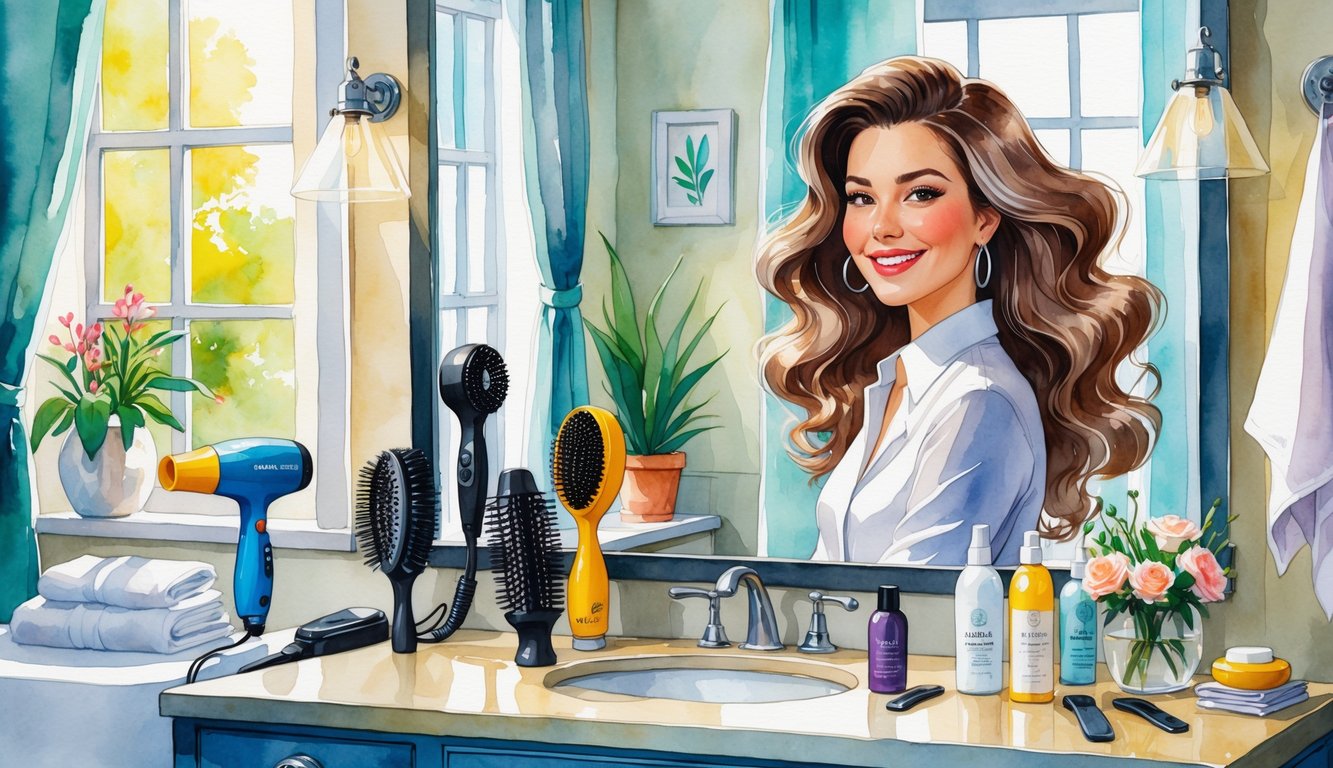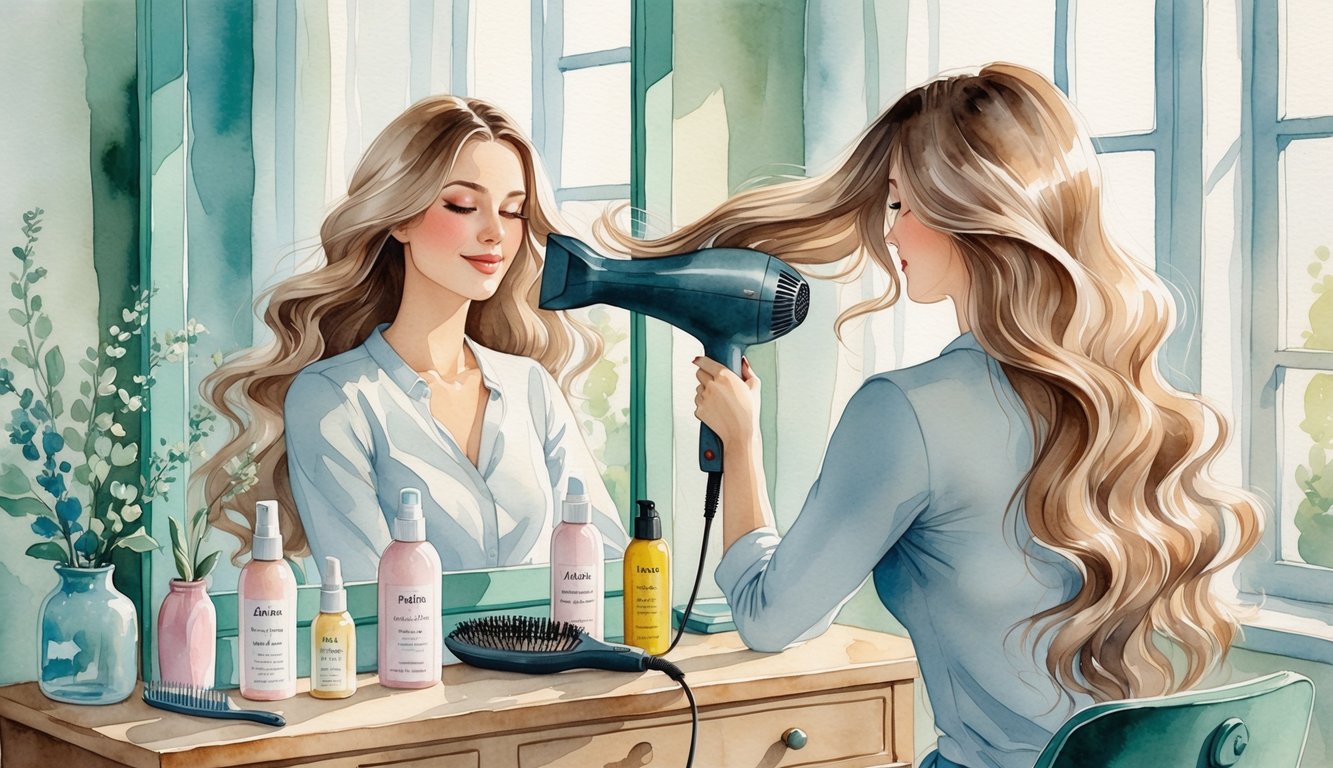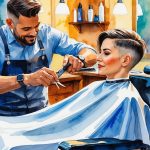
Protecting Hair Health During Heat Styling

Frizzy split ends? Crunchy, straw hair? Been there. Regretted it every single time. Blow dryers, flat irons, random curling wands—they’d destroy my hair if I didn’t obsess over heat protectants. I’m not even exaggerating. Skip it once, and suddenly my hair’s mad at me for a week.
Importance of Proper Heat Protection
Sometimes I stand there, staring at my bottle of heat protectant, wondering if I should just risk it for volume. I mean, what’s the worst that could happen? (Answer: fried hair. Don’t do it.) Dermatologists, trichologists, beauty editors—they all say heat protection isn’t optional. I lean toward thermal sprays with silicones or wheat protein—Garnier’s leave-in is actually pretty solid—because, wow, unprotected hair against 400°F plates just… breaks. I tried the “natural oils only” thing because some TikTok person said it was genius. It was not. My hair fried. The American Academy of Dermatology says oils don’t cut it. Get a heat protectant for hair that goes up to 450°F if you’re glued to your flat iron, and actually spray every section. Not just the top. Miss a spot, and you’ll get weird, patchy color and uneven texture. It’s not rocket science, but it’s easy to mess up.
How to Prevent Damage to the Cuticle
Let’s talk cuticle. It’s just overlapping keratin scales, right? Once they’re burnt, you can’t put them back together—hair turns rough, loses shine, feels like straw. I’ve watched stylists lower the temp for fine sections and crank it for coarse hair. Makes sense, but who has the patience at 7am? For months, I thought blasting high heat would get me out the door faster. Nope. Salon pros keep telling me, anything above 350°F just speeds up damage. Schwarzkopf swears wrong tool use means chronic breakage. I started letting my hair air dry halfway before finishing with heat. Apparently, less water means less cuticle damage. Who knew?
Oh, and detangling before you touch the dryer? Game changer. Brushing through wet, tangled hair while blow drying just rips everything apart. I found that out the hard way. Now I use heat-protective shampoo and conditioner—Seaweed Bath Co is my go-to, actually helps a bit. Not perfect, but I vacuum up less hair now, so that’s something.
Touch-Ups and Extending Your Blowout
By day three, my hair’s a mess—some parts flat, some poofy, and my scalp’s just done. Volume might survive, but humidity or a random bike ride? Forget it. Honestly, the right products matter way more than anyone on YouTube admits.
Using Dry Shampoo to Refresh
I hoard dry shampoo like it’s going out of business. I always have two cans, just in case. Spraying it is never graceful—always ends up in a weird cloud. Stylists keep telling me, use it at night, not in the morning. I ignored that for years, but it actually works. The powder needs time and friction to soak up oil, and the difference in the morning is wild.
Kevyn (my stylist’s friend’s cousin or something?) said to use a boar bristle brush, not a paddle brush, to work it in. I guess it spreads the product and lifts roots. And, yeah, massaging with your fingers after spraying helps. I don’t care what the label says. For dark hair, clear sprays are a must—nothing ruins your look faster than white residue. Apparently, 60% of people use dry shampoo wrong and then blame the weather. I definitely did.
Texturizing Sprays for Second-Day Volume
Texturizing spray is a lifesaver. Stylists always pull it out when people complain their hair never holds. My stylist warned me not to use sea salt spray on my keratin-treated hair. I didn’t listen. Regretted it. Now I keep a travel-size Oribe in my bag, and I’ll just flip my head over and spray the roots at the gym. Instantly looks better.
The folks at Mane Attraction Salon say to “scrunch” with your fingers while the hair cools. I forget half the time and then wonder why nothing changed. You have to ruffle up the sections, not just spray and hope. Too much product? Kills the volume. I once kept spraying at a wedding and ended up with helmet hair. Never again. If a product’s sticky, I toss it.
Salon-Worthy Finishing Touches
Every time I almost nail a blowout, there’s a rogue strand or a weird dull spot. People blame humidity or shampoo, but honestly, it’s usually just me missing a step or using the wrong product. “Great hair day” isn’t magic, it’s just not screwing up.
Achieving a Shiny, Frizz-Free Finish
My round brush deserves all the credit. It’s nothing fancy. I used to believe in those expensive ionic dryers, but honestly, most stylists say it’s about technique. I barely finish blow drying before the humidity starts messing with me again.
Once my hair’s about 80% dry, I blast it with cold air for a minute. It sounds pointless, but it smooths the cuticle and gives me actual shine instead of sad, dull ends. Why don’t more people talk about this?
I squeeze a pump of serum (Moroccanoil, sometimes just whatever’s cheap) into my palms and run it through the ends. Never the roots. I’ll mist a shine spray if I’m feeling extra, even though it seems unnecessary—some stylists say hairspray tames flyaways too. I lose my comb every single time, find it, drop it, repeat. My anti-static detangling comb actually works better than any brush for smoothing out random frizz after errands.
Locking In Style With Hairspray
I once trashed a blowout with max-hold hairspray. Helmet head. My sister laughed for days. A stylist told me, “Always mist, don’t soak. Keep it at least a foot away.” Not life-changing, but the difference in volume is real.
Texturizing sprays actually give better volume than old-school hairsprays. I didn’t believe it until I tried. I use a light mist of workable spray, then a quick blast of volumizing dry texture spray at the roots—LABEL.M Texturising Volume Spray is a pro favorite. Never brush through until it’s dry, or you’ll get a dust cloud and lose all the smoothness.
I tried “refreshing” my curls with strong hold spray once. They didn’t move for two days. Lesson learned: medium hold lets hair bounce. Favorite trick? Flip your head, mist roots, shake out. Sometimes it works, sometimes it’s just chaos, but it’s fun.
Boosting Confidence With Your At-Home Blowout
Every time I finish a blowout, I swear my mirror’s judging me. The volume feels good until the humidity wrecks it, but for those first few hours? I almost believe I know what I’m doing. Silk pillowcases are supposed to reduce frizz by 43% or something—I read it somewhere, can’t remember where. But honestly, it does seem to help the style last. Why isn’t everything that easy?
First time I used volumizing shampoo, I expected my hair to rebel. It did, but then my roots looked suspiciously like I’d paid for a salon blowout. A New York stylist told Byrdie it’s all about scalp lift. No one taught me that in health class. Sometimes I want to skip the brush and just magically have perfect hair, but apparently, round brush tension is non-negotiable.
If I ever feel confident, it’s during those last few flips with the dryer. Not before. I hit my hair with a cool shot (sometimes it works, sometimes not—Allure says pros do it, so I do too), and for a second, I think I’ve cracked the code. Then I walk into the kitchen, see someone’s half-eaten sandwich, and forget about my hair.
No magic. Just a bunch of steps, some expert-backed rituals, and that little rush when someone texts, “Did you just leave the salon?” I have to stop myself from sending a five-paragraph explanation. If that’s not confidence, what is?



